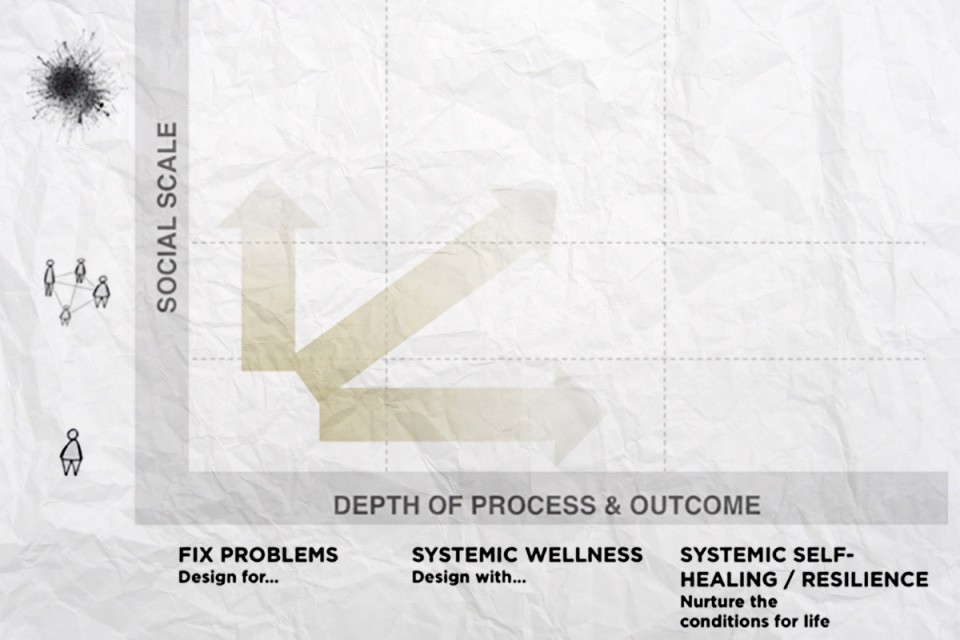Session 4: March 23
The necessary qualities of a systemic approach
The complexity of human systems and human nature requires our approach to be systemic, participatory, and emergent
In plain language, we are asking how we can affect the way people get along and get things done. In academic language, we are asking how we can influence the structures and patterns of a social system. We can’t just tell everybody to change, and no product or service project, no work of planning or policy will simply Make Things Better.
Based on the nature of social systems and human experience, we understand that our approaches to this work must be:
Systemic: engaged not with individuals alone or with an artificial and privileged subset of the system, but with the whole system; engaged not only with surface symptoms, but with the deeper underlying patterns and dispositions.
Participatory: the people doing the work are not a small group of “experts” or a single team or agency; the whole system (or a truly representative microcosm of the system) participates in the work.
Emergent: discerning about the match between approach and complexity, employing an experimental, emergent approach when the nature and form of “good outcomes” cannot be predicted or designed in advance.
Lecture and activities
- Activity: Modified Systems Game
- Lecture: Introduction to systemic, participatory, emergent, conversational approaches
- Lecture and videos: Examples and stories of systemic, participatory, emergent approaches
- Activity: Practicing Active Listening
Key concepts
- Systemic, emergent, conversational approaches to affecting social systems
Required materials
No required readings.
Assignments
- Teach “Active Listening” to someone
- Chapter One reflection paper
Optional materials
Monique Sternin, To solve hard challenges, we must look for the positive deviants. (TEDxMidAtlantic)
Jason Roberts, How to build a better block (TEDx)

0 comments on “4: The necessary qualities of a systemic approach”Add yours →